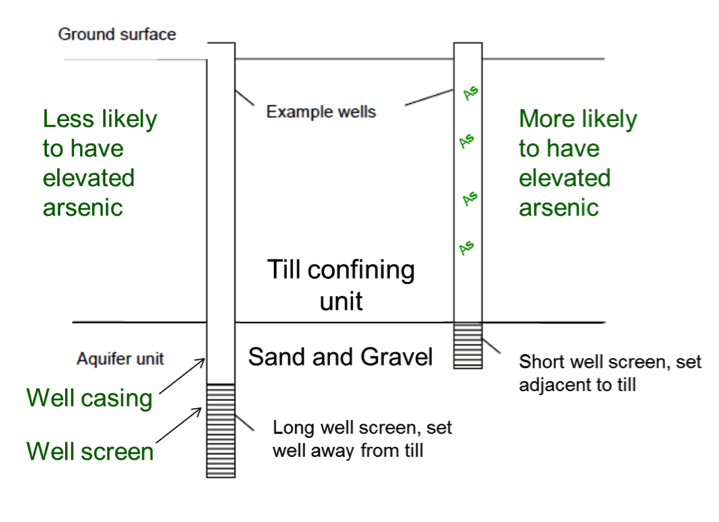[ad_1]
The study highlights a new and important finding: Controllable well construction choices, not just location and depth, influence arsenic concentrations in drinking water.
“Chronic exposure to high levels of naturally occurring arsenic through drinking water can cause certain cancers, skin abnormalities and other adverse human health effects,” said Melinda Erickson, a USGS research hydrologist and the lead author of the study. “Results from this study can help improve arsenic concentration predictions and help identify safer groundwater supply options in similar aquifers throughout the U.S. and globally.”
The glacial aquifers of Minnesota used for domestic wells commonly have elevated arsenic concentrations. The new study found that short well screen lengths of four or five feet, which are typical, were associated with higher probabilities of elevated arsenic concentrations. At the time of well drilling, choosing to place a well screen farther beneath the overlying confining unit, also called an aquitard, and/or using a longer-length screen would lower, though not eliminate, the risk of having high arsenic concentrations in the well water.
USGS scientists created arsenic hazard maps for regions in northwestern and central Minnesota, and used a sophisticated statistical model to determine which environmental and man-made variables influence arsenic concentrations. They found that natural aquifer characteristics, such as position on the landscape and soil chemistry, were among the most influential for predicting elevated arsenic levels.
Public water supplies are regulated by the U.S. Environmental Protection Agency, but maintenance, testing and treatment of private water supplies are the responsibility of the homeowner. The EPA’s maximum arsenic level allowed for public water supplies is 10 micrograms of arsenic per liter of water. In Minnesota, arsenic concentrations exceed 10 micrograms of arsenic per liter in about 11 percent of newly constructed private wells, and arsenic is detectable in about 50 percent of wells. The Minnesota Department of Health recommends that well owners with detectable arsenic treat their drinking water.
Glacial and other sand and gravel aquifers similar to those in Minnesota exist across the northern U.S. and in places like southeastern Asia. Results from the study can help improve arsenic concentration prediction methods and groundwater infrastructure far beyond Minnesota.
This research was funded by the Minnesota Department of Health through the Minnesota Clean Water Fund and the USGS. The new study is published in the journal Water Resources Research. For more information about USGS water studies in Minnesota, visit the USGS Water Resources of Minnesota website.
[ad_2]
Source link
- Warmer water could cool Montana’s trout fishing economy - September 7, 2022
- Water Released from Crystallizing Magma can Trigger Earthquakes in Yellowstone - September 5, 2022
- Thermal Infrared Remote Sensing at Yellowstone 101 - August 29, 2022






